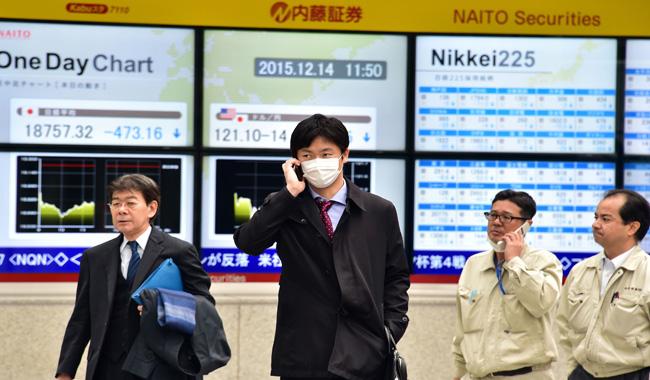-
Tips for becoming a good boxer - November 6, 2020
-
7 expert tips for making your hens night a memorable one - November 6, 2020
-
5 reasons to host your Christmas party on a cruise boat - November 6, 2020
-
What to do when you’re charged with a crime - November 6, 2020
-
Should you get one or multiple dogs? Here’s all you need to know - November 3, 2020
-
A Guide: How to Build Your Very Own Magic Mirror - February 14, 2019
-
Our Top Inspirational Baseball Stars - November 24, 2018
-
Five Tech Tools That Will Help You Turn Your Blog into a Business - November 24, 2018
-
How to Indulge on Vacation without Expanding Your Waist - November 9, 2018
-
5 Strategies for Businesses to Appeal to Today’s Increasingly Mobile-Crazed Customers - November 9, 2018
China Sell Off Causes Poor Start to 2016 in World Stocks
Japan’s Nikkei fell 1 per cent, playing catch-up to falls in US stocks in the last two sessions during Japan’s market holidays.
Advertisement
Activity in China’s services sector expanded at its slowest pace in 17 months in December, a private survey showed on Wednesday, in a further indication that China’s economy may be losing steam.
On Tuesday China’s securities regulator said that the “circuit breaker” mechanism created to contain wild swings in the markets calmed down investors and played a positive role in protecting their rights in Monday’s trading. The latest slump was prompted by the People’s Bank of China (PBOC)’s decision to set the official dollar/yuan midpoint rate at 6.5314, the weakest fixing since 2011.
European shares are also seen opening lower, with financial spreadbetters expecting Germany’s DAX to fall 1.5 percent, France’s CAC 40 0.7 percent and Britain’s FTSE 100 0.6 percent.
Oil prices jumped as Saudi Arabia’s execution of a prominent Shi’ite Muslim cleric at the weekend spurred regional anger and geopolitical tensions in the Middle East. Riyadh cut ties with Iran after protesters stormed the Saudi embassy in Tehran.
This rise came due to relations between leading producers of crude, Iran and Saudi Arabia, deteriorating which raised concerns supplies would become disrupted.
Bond prices rose. The yield on the 10-year Treasury note fell to 2.23 percent.
The Saudi riyal fell sharply against the dollar in the forward foreign exchange market.
Adding to the mix was a possible nuclear test in North Korea, helping push the yen – historically one of investors’ first choice in times of stress – to a near three-month high against the dollar.
Crude inventories at Cushing, Oklahoma, the delivery point for WTI futures and the biggest USA oil-storage hub, increased by 1.37 million barrels last week, the API reported Tuesday, according to Twitter postings and a person familiar with the numbers. It was its weakest for almost five years.
The central parity rate of the Chinese currency, the renminbi or yuan, weakened by 137 basis points to 6.5169 against the USA dollar on Tuesday, according to the China Foreign Exchange Trading System.
Advertisement
“It was quite unusual for the Fed to raise rates when the ISM is below 50, (which indicates contraction)”. Meanwhile, the United States raised its interest rates in December and more hikes are expected in 2016. And we are likely to see another month of contraction.




























